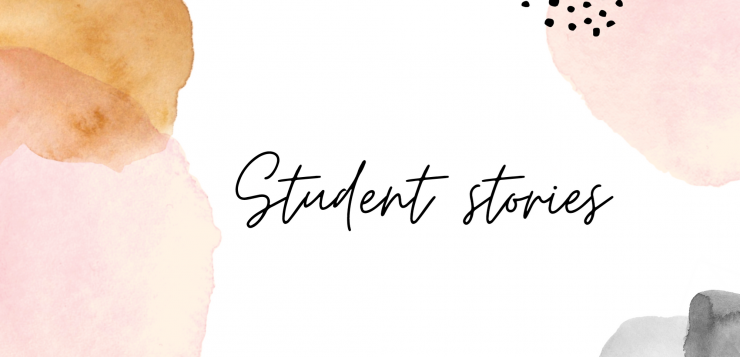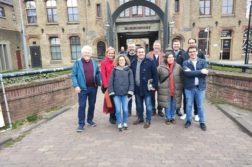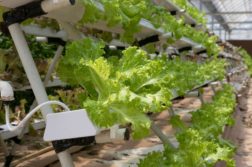Bachelor of Business Administration student Roosa studied in PDP2020. She wrote about her experiences on her blog and now the story can be found from here HAMK DF’s blog in English. The PDP2020 was quite a ride – read more!
Where it all began
It’s January 2020 and a new module is just around the corner after the Christmas holidays. I was so thrilled to start my new marketing courses and in the first lecture, I heard that there would be a whole new course starting in HAMK. It would contain a new concept of a multidisciplinary project working course. Leap to the unknown, new subjects, and also meeting new people sounded like just the perfect challenge for me.
HAMK Design Factory is the second Design Factory in Finland. Design Factory is a multidisciplinary product- and service development learning environment. There are many Design Factories around the world, which also bring students together from different degree programs, to learn, and to create new things. The PDP course, which I attended, comes from the words Product Development Project. The idea behind the PDP course is to create new solutions for defined problems. In our course, there were three different partners from healthcare and six different assignments regarding healthcare. Our collaboration was with Kanta-Häme central hospital, the new ASSI-hospital in Hämeenlinna, and Riihikoti from Riihimäki.
In the beginning, I was so nervous when the course started because I didn’t know anyone from the course. There were students from different degree programs and most of the students were from healthcare, different fields of engineering, and also there were a few business administration students. Some of the students included from exchange programs, so the premises for the course were first and foremost versatile, not to mention a variety of knowledge and skills.
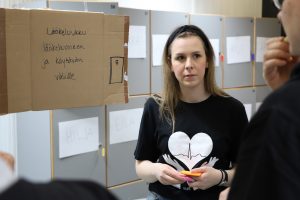 In the PDP, there were six different projects, which required six different teams. Teams were built in a way, that there would be students from different fields, if possible. Every team had a project manager, a safety officer for the machines, and an economy officer, who was responsible for the budget. The main tasks of the project manager were to communicate with the client, Design Factory staff, and make sure that the project goes forward. The safety officer watched that the prototype was built safely, while using the machines, and finally the economy officer kept the watch on the budget for the project.
In the PDP, there were six different projects, which required six different teams. Teams were built in a way, that there would be students from different fields, if possible. Every team had a project manager, a safety officer for the machines, and an economy officer, who was responsible for the budget. The main tasks of the project manager were to communicate with the client, Design Factory staff, and make sure that the project goes forward. The safety officer watched that the prototype was built safely, while using the machines, and finally the economy officer kept the watch on the budget for the project.
Team number 2, Riihikoti Nursing Processes
My team was one of the Riihikoti assignments and because the groups needed a team manager and I still didn’t have my own group after the first meeting, I decided to volunteer to be the project manager. Even though it was something that I didn’t plan on partaking in. During the springtime, it turned out to be amazing. At the beginning of the project, there were three healthcare students, but when the course continued we also got a few engineering students working with us. When the second sprint of the PDP started in March, the whole team chanced entirely, and the language changed from Finnish to English.
Thus, to get our project rolling again. We first needed to group together and think about our assignment. Plans were made throughout the whole course because we filled several different canvases about goals and schedules. Though isn’t there a saying, that well planned is half done? Have to say, that in our case, it was actually true.
Our team’s assignment was, as the title mentions, nursing processes. Our aim was to follow the nurses working processes in Riihikoti’s 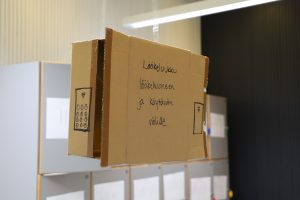 LAKU-unit, which is a short-term treatment unit. We needed to find out, which tasks give the largest workloads to the nurses and how these processes could be lightened using technology in the future. So that we were able to get the assignment started, we decided to go visit Riihikoti, where we would meet our client. Together we thought about how we could start working around the project and which things are important, and needed in the project.
LAKU-unit, which is a short-term treatment unit. We needed to find out, which tasks give the largest workloads to the nurses and how these processes could be lightened using technology in the future. So that we were able to get the assignment started, we decided to go visit Riihikoti, where we would meet our client. Together we thought about how we could start working around the project and which things are important, and needed in the project.
Right to the action
The first concrete step was to follow the nurses’ work from a distance. Much more we couldn’t see because the nurses’ were really busy. Gladly a few nurses wanted to help us and they introduced the practices and different places. In addition, we got to interview a few employees, who gave us a lot of ideas on how to proceed with the project. We also decided to create a survey for all the employees in the unit, so we could get a wider knowledge and create a picture of which things the nurses feel most wearing.
The survey got a nice amount of answers and we visited the Riihikoti a few times. In Riihikoti we got to know the unit’s robot room where was technology for home care like a medicine distribution robot, an electronic bed, and a lifting robot for lifting patients. We got a lot of information from those devices, but those didn’t help us much.
We also decided to pay a visit to Kotitori Laitetori in Tampere, which has a showroom for different kinds of technologies meant for home care. This gave us more information about games for people with a memory disorder and a talking refrigerator. We found a lot of new and interesting information but for actual technology, we couldn’t find a clear solution.
After discussing a while and going through answers from the survey we ended up concentrating on developing the medicine distribution in Riihikoti. LAKU medicine room and the medicine distribution needed development and we decided to go with that. We thought about different solutions on how to develop the medicine distribution in a more technological way. We planned, for example, a new kind of medicine cart, which includes a computer for the medicine log. Previously all the information was written by hand on paper.
At this point in the project, the Halfway Gala was already behind the corner. We made a presentation of a newly developed medicine cart and als0 some of our new ideas for the medicine cabinet. The idea behind the cabinet was to make the collection of the medicine less process. We presented that it would be located between the medicine room and hallway. This way, a nurse could order the needed medicine beforehand, and not need to walk all the way to the medicine room. The Halfway Gala was the first major step for our team’s project. During the event, teams would share their ideas with one another, and with the project clients. These ideas would help in developing the project even further in the next phase of the course. I must say that the Halfway Gala was very interesting and it was wonderful to see new ideas. It also inspired other teams about their self-made team shirts or hoodies.
After the Halfway Gala
When we got to wrap up the Halfway Gala it was time to move forward to the new module and start thinking about the Final Gala. The teams experienced a change with their teams since some of the students had to move forward with their studies, and internships, while a lot of new students came to the course. Our team also had this experience because approximately half of our team members changed and next we needed to start speaking English since we had new students from international degree programs.
In the second module, we focused on developing the ideas of the first module even further. Our team mainly continued the medicine cabinets hatch development to a more concrete and functioning model. During spring 2020, the COVID-19 epidemic moved the PDP learning into the web, which meant that all team collaboration would happen remotely through the Teams app. Our team had team meetings about once per week, just like we would’ve done live in the Design Factory. We pondered together different perspectives and solutions, which in turn gave us more new ideas.
Also, the Final Gala was forced to be carried out remotely and because meetings in Design Factory wasn’t possible. Our team, for example, made a 3D prototype of the medicine hatch and a presentation about an app related to the hatch. I was so proud of my team for working so well remotely and how we were able to get the course to an end in spite of the COVID-19 quarantine. During the spring, we also learned to use new platforms like Glue, which caused a few grey hairs to frow for everyone. But all in all, everything went well and we finished the whole PDP project successfully.
While the course was ending we felt so wistful. We had worked intensively for the whole spring and we had learned so much during the course. All in all, the PDP course was a journey to the world of nursing and developing itself. Co-operation with Riihikoti and students from different fields was so interesting and what was best, once again I got many new friends.
Top 3 – What I learned?
- Interdisciplinarity is power. I learned a lot from healthcare and engineering students. When combining students from different fields, a lot of new perspectives were found.
- I improved my English skills. I have always felt like I’m not that good at speaking English, I know I’ll survive and I understand everything most of the time. But talking is the point, where I feel like I struggle a bit but I learned to speak more fluently during the six months of the course.
- A good team needs a lot of communication. During the course, I noticed a few difficulties when it came to communication from different directions, in the team, from the company representatives, and from the Design Factory. But gladly, in the end, the clear messages and things explaining the subjects from scratch worked out and everyone understood what was happening and when.
All in all, this course was one of the best choices I have made during my studies. Even though the days were sometimes extremely long, stressful and tiredness was hanging around the clouds, I still liked this course so much. First and foremost, I learned to see the world more broadly once again and see things from the eyes of different people. If an opportunity like this comes around, it surely is worth grabbing, and bravely jump on onboard.
Roosa Mäntyneva, Bachelor of Business Administration student
– The original article is published on Roosa’s blog
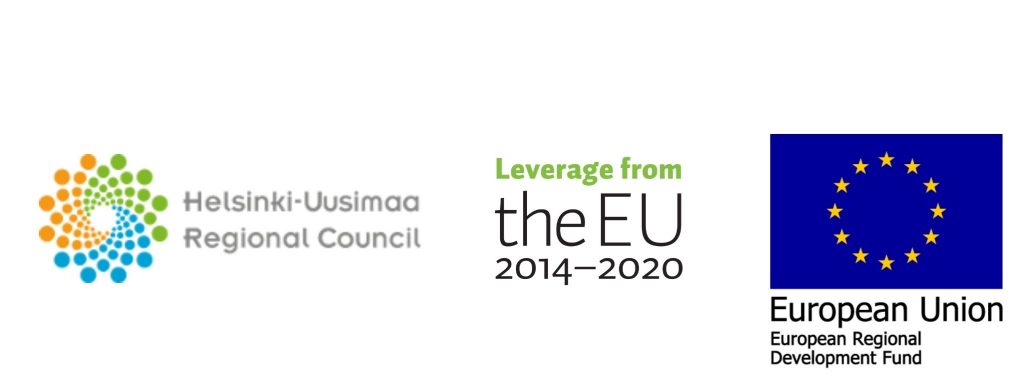
PDP is part of Häme Design Factory project
